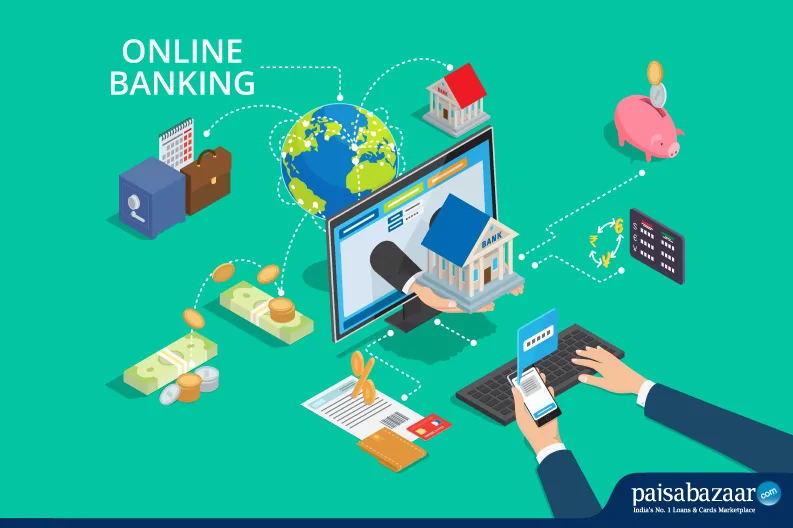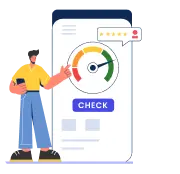Online banking, also known as internet banking, is a banking method in which transactions are carried out over the internet. In the early 1980s, online banking began in New York, USA. Internet banking software can offer personal and corporate banking services with features such as account balances, statements, recent transactions and payments. Online banking used to be limited to exclusively online banks but it has become one of the most popular banking methods these days. Let us understand what is online banking in detail.

How does online banking work?
In order to access a financial institution’s online banking facility, a customer with internet access must register for the institution’s service and set up a password and other customer verification credentials. Financial institutions now routinely assign numbers of customers to access their online banking facility, whether or not customers have indicated their intentions.
Customer numbers are normally not identical to account numbers. A number of client accounts may be connected to one client’s customer number. Each financial institution can identify the types of financial transactions that can be transacted by online banking, but usually includes account balances, a list of recent transactions, online bill payments, investments and transfers of funds between a customer and another’s account.
The facility can also give the customer the opportunity to order a cheque book, statements and report loss of credit cards, stop paying on a cheque, change addresses and other routine actions instantly without visiting the bank.
Features of online banking
- Customers can perform online banking non-transactional tasks, including viewing account balances and recent transactions, ordering cheque books, downloading M-banking applications, e-banking, etc.
- Bank customers can perform online banking tasks, such as transfers of funds between linked accounts of the customer, payment of bills, application for loans, registration of utility bills and payment of bills, etc.
- Certain financial institutions offer some internet banking services such as personal accounting software. Some online banking platforms support account aggregation so that customers can monitor all their accounts in one place, whether it’s with their major bank or with other institutions.
- Online banking services typically cost less than traditional brick and mortar accounts, offering competitive rates at the same time. You can use an online bank account and avoid monthly maintenance fees.
Advantages of Online Banking
- Online banks are available 24/7 as long as we have a connection to the internet.
- Permanent access to anywhere in the bank, mobile or computer.
- It takes less time and we don’t need to go to the bank directly.
- Helps immediately and accurately transfer the money.
- Online bill pay is one of the great advantages of online banking. Instead of writing checks or filling out forms to pay bills, when customers set up their accounts at their online bank, all we need is a simple click.
Disadvantages of Online Banking
- If there is an outage of power or if the servers go down, we may not have access to the account.
- While many online banks are well-established and reputable, sometimes it can be difficult to feel comfortable with a bank that has no physical presence, especially when there are large sums of money.
- If the server of the bank is down or the internet speed is slow, online transactions are not possible.
- It may be hard for a beginner at first go to understand the use of internet banking.
- Most of the banks make sure their websites are safe, but no bank website is immune to cyber crime or hacking.
Differences between Online Banking and Mobile Banking
| Online Banking | Mobile Banking |
| Financial transactions are conducted on the internet through the website of a bank. | Mobile banking refers to an internet based facility provided by banks that allows the customers to conduct bank transactions via mobile devices. |
| It is accessed through a browser via the computer or laptop. | It is accessed through an application on the mobile. |
| One can transfer money through NEFT, RTGS or IMPS. | One can transfer funds through NEFT or RTGS. |
| Online banking has more functions than the mobile application. | Mobile banking has limited functions. |
| No need to download. | One needs to download the respective bank’s mobile application on their phone. |
| It requires access to internet, typically through Wi-Fi or wired connection. | It requires access to internet, either through Wi-Fi or data. |
How to set up online banking?
- Customers must enter their personal details such as their name, date of birth, pin code, account details, etc.
- PAN card is mandatory to open the bank account
- The username and password must be chosen by the client. Then they need to have access to a phone and the bank can have to send him / her activation code.
- Then customer can sign in to online banking.
Safety Precautions for Online Banking
In general, online banking is safer than traditional banking. It is safe when technology is met at the front end by alert consumers. As an account holder, you have a role to play in ensuring the protection of accounts. Criminals also work on a smaller scale through direct attacks on consumers. For example, scammers often use so-called phishing scams, in which they send emails pretending to represent a financial institution in the hope of contacting an unsuspecting consumer. It is relatively easy to stay safe. We need to keep our computers and equipment up to date.
If the bank requires a password generated by the user to access online accounts, make sure that the password is strong. Use passwords that are difficult to guess and never write them down. Finally, never respond to emails, phone calls or text messages requesting you to provide sensitive (or personal) account information. Don’t answer any emails that seem too good or bad. Certainly, scams occur online. So long as you send money only to someone you know, you should be able to avoid most of it. Remember, the riskiest actions are giving someone else money or information. Customers should regularly monitor their accounts. Connecting to the bank using computers and networks we know and trust is always the best practice.

